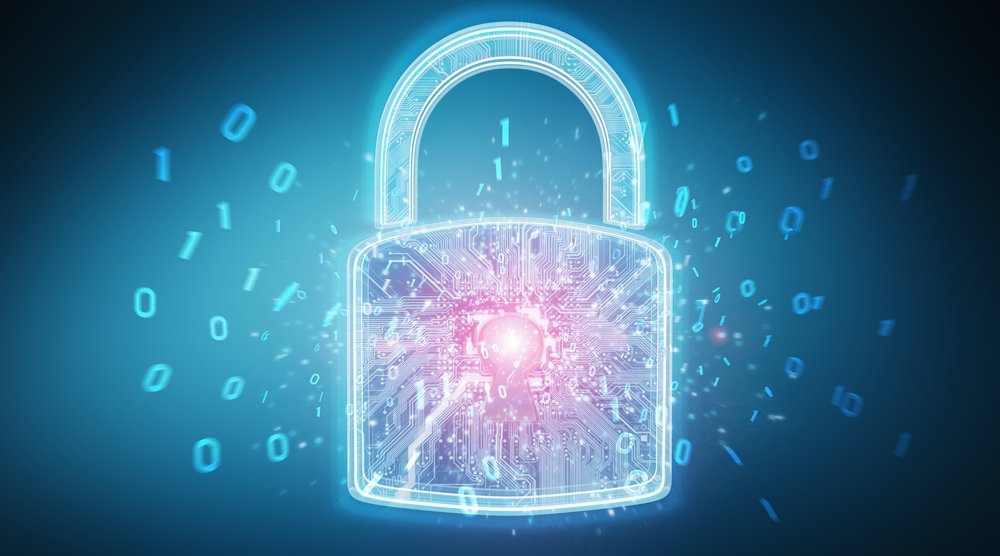Generative AI and cybersecurity go hand-in-hand, revolutionizing how businesses approach data security. Companies are using GenAI security tools to secure their digital environments and gain a competitive edge.
With every passing day, data security concerns escalate, and the demand for enhanced security measures becomes more pressing. Organizations that adopt AI-driven solutions to enhance their cybersecurity strategy find them revolutionary in protecting sensitive information. By automating threat detection and response, these systems reflect a proactive approach to data security, ensuring businesses stay one step ahead of potential breaches and safeguard valuable assets.
With Gartner predicting GenAI adoption as a leading data security trend for 2024, it’s no surprise to see a rise in enterprises using the large language models (LLMs) that power the technology to:
- Analyze vast amounts of data.
- Identify potential vulnerabilities.
- Generate tailored solutions to fortify digital defenses.
From detecting and mitigating cyber threats to continuously monitoring and adapting security protocols, GenAI is emerging as a game-changer in data protection. In this post, we’ll take a look at how your organization can use it to strengthen its cybersecurity infrastructure and develop more resilient data protection strategies.
How AI Is Used in Cybersecurity
The application of AI in security includes powerful tools and techniques to protect sensitive information and systems across various industries and sectors. GenAI integrates deep learning and large language models to provide robust, scalable solutions that improve responsiveness and reduce the risk of human error in cybersecurity processes. Here’s how.
1. Precise Anomaly Detection
GenAI uses sophisticated machine learning algorithms to analyze behavioral data in real-time, something particularly crucial in industries like finance and healthcare, where deviations from the norm could signal fraudulent activities or breaches. Unlike traditional methods, which were largely rule-based, often failed to adapt to new and evolving threats, and resulted in higher false positives and missed detections, GenAI models continuously learn and update themselves to recognize even the subtlest anomalies, significantly improving accuracy and reliability in anomaly detection processes.
2. Access Control Fortification
Industries managing large volumes of sensitive data, such as healthcare and pharmaceuticals, can use AI-enhanced access control systems to analyze continuous streams of user activity data and manage and adjust access rights based on user behavior patterns and risk assessments. This dynamic approach is a big improvement over traditional static methods, which were often slow to react to changes in user status or emerging threats, leaving systems vulnerable to unauthorized data access and insider threats. GenAI ensures that only the right individuals can access sensitive information at the right times, greatly reducing the risk of data breaches.
3. Bolstered Encryption Protocols
AI-driven encryption technologies automatically tailor encryption methods based on the sensitivity of the data and current threat levels. For instance, in the finance sector, traditional encryption methods often provided unvarying security measures that didn’t account for the varying degrees of data sensitivity, resulting in either excessive or inadequate protection. AI algorithms intelligently adjust encryption standards, ensuring optimal security for data in transit and at rest without compromising system performance or user accessibility.
4. Adaptive Solutions to Combat Evolving Threats
GenAI’s adaptive security solutions learn from ongoing data feeds and evolve to counter new cybersecurity threats as they arise. Where traditional security systems typically require frequent manual updates and often lag in addressing rapidly emerging threats, AI-powered systems automatically update their algorithms without human intervention, providing a more robust defense mechanism for keeping pace with current security challenges.
5. Enhanced Cybersecurity Training & Simulation
AI-based cybersecurity training platforms use realistic simulation tools that mirror actual cyber threats. Users benefit from a significantly advanced immersive training experience compared to older training methods, which often don’t adequately prepare personnel for real-world attacks. For businesses where quick and effective response to cyber incidents can prevent significant losses, these advanced AI-driven simulations are vital for training staff to recognize and react to cyber threats efficiently and effectively.
6. Predictive Analysis
Predictive analysis using AI anticipates and alerts organizations of potential security incidents before they occur. By analyzing patterns and trends from historical data, GenAI systems can identify potential vulnerabilities and predict likely attack routes, enabling preemptive security measures. By shifting from a reactive to a proactive security stance, organizations can mitigate risks before they materialize, significantly reducing a breach’s potential impact.
7. Phishing Detection & Prevention
As phishing attacks become increasingly sophisticated, AI-driven systems lessen their success rate by analyzing email traffic and applying machine learning to recognize malicious patterns and anomalies, effectively identifying potential phishing emails before they reach an end user. Valuable for any industry, this capability is particularly essential in sectors like finance and healthcare, where sensitive financial information is frequently targeted by cybercriminals. AI-driven phishing detection systems are also more accurate respond quicker than older, manual screening methods.
8. Automated Security Patch Generation
Traditional, manual patch management processes can be error-prone and slow, leaving systems vulnerable to known exploits for longer periods. GenAI systems maintain system integrity and security through automated code analysis that pinpoints vulnerabilities and then automatically generates and applies patches across various systems in real-time, significantly speeding up response times and reducing the window of opportunity for attackers.
9. Realistic Biometric Data
GenAI-enhanced biometric security systems are increasingly used in high-security settings, including government and research facilities. They improve identity verification accuracy and reliability, something traditional biometric systems often struggle with. AI-driven systems can analyze more complex aspects of biometric data, such as subtle facial expressions or fingerprint patterns, offering a more secure and reliable method of access control that’s much harder for unauthorized users to bypass.
Managing GenAI Risks
GenAI’s ability to generate highly authentic text, images, video, and audio unaided makes integrating into your organization’s cybersecurity strategy an easy decision. Benefits like improved threat detection, predictive analysis, and automated responses translate into significant cost savings and accelerated breach identification and containment.
Of course, every technology has its disadvantages or faults, and some risks are involved in using GenAI in cybersecurity. However, understanding your organization’s unique security risks enables your security team to mitigate these and other risks.
- AI model safety. The large volume of data LLMs use to learn and understand patterns makes predicting or generating solutions for complex issues easier. The model can also reuse and share the information via generated content. However, problems can arise if the model picks up biases or gives out sensitive information that might cause harm. Strict policies and procedures for data discovery, risk assessment, security, and entitlements can prevent these and other issues.
- Enterprise data use. Businesses that use GenAI to process and analyze internal and external data need a management plan that meets security and compliance regulations. Organizations must have a comprehensive understanding of what data’s available to their system to avoid having sensitive information used without appropriate controls. As AI improves its ability to mimic human communication, it’s essential to avoid social engineering scenarios where a system can be compromised, leading to users unwittingly giving out sensitive data. Extensive checks and controls, including data usage audits, help prevent information misuse through GenAI manipulation.
- Prompt security. Prompts, which can be from users or system-generated, are the input given to AI tools to get a response. Well-designed system prompts act ethically. However, if the model isn’t taught to recognize and deny dangerous prompts, bad actors can also use them to gain access via threats like malware. Steps like authentication and authorization, input validation, secure coding practices, regular updates, routine monitoring, and encryption can significantly enhance system prompt security and prevent unauthorized access.
- AI regulations. It can be easy to forget that AI is still in its infancy. As GenAI evolves, governance will also change to address new security and privacy challenges. Current governance laws like GDPR, CPRA, and the EU AI Act will likely change over time, meaning organizations will need to implement internal policies and processes to protect data per these new or updated regulations.
Future Of GenAi In Cyber Security
It would be nice if cyber threats remained static, allowing organizations to set up defenses once and be protected indefinitely. Sadly, the reality is far more dynamic, with cyber threats constantly evolving and becoming more sophisticated. Crafting a robust data security strategy in such an environment requires vigilance and a willingness to adapt and innovate.
GenAI is a transformative opportunity for enhancing cybersecurity measures. By integrating it into your data security strategies, you can leverage its powerful capabilities to predict and counteract threats more efficiently, automate responses to security incidents, and even identify vulnerabilities before they can be exploited. The technology’s ability to process and analyze vast amounts of data at unprecedented speeds allows for real-time security adjustments, which is crucial in today’s fast-paced cyber threat environment.
Velotix offers expert guidance to help organizations looking to navigate modern data security challenges with the latest tools and technologies. We understand that, while GenAI promises to revolutionize cybersecurity, its successful integration depends on careful planning and skillful execution. Our expertise can make this integration smoother, helping your organization integrate GenAI in a way that enhances its overall security posture and resilience against cyber threats. Through strategic planning and robust AI implementation, we deliver customized solutions that align with your enterprise goals and drive growth across various sectors.
Contact us today to learn more or to schedule a demo.


